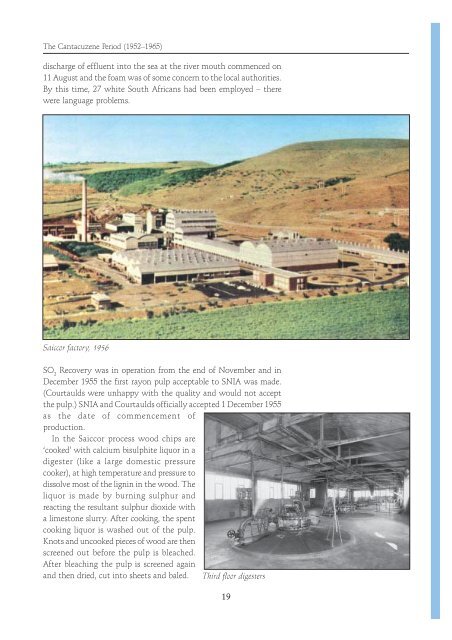You also want an ePaper? Increase the reach of your titles
YUMPU automatically turns print PDFs into web optimized ePapers that Google loves.
<strong>The</strong> Cantacuzene Period (1952–1965)<br />
discharge of effluent into the sea at the river mouth commenced on<br />
11 August and the foam was of some concern to the local authorities�<br />
By this time, 27 white South Africans had been employed – there<br />
were language problems�<br />
<strong>Saiccor</strong> factory, 1956<br />
SO Recovery was in operation from the end of November and in<br />
2<br />
December 1955 the first rayon pulp acceptable to SNIA was made�<br />
(Courtaulds were unhappy with the quality and would not accept<br />
the pulp�) SNIA and Courtaulds officially accepted 1 December 1955<br />
as the date of commencement of<br />
production�<br />
In the <strong>Saiccor</strong> process wood chips are<br />
‘cooked’ with calcium bisulphite liquor in a<br />
digester (like a large domestic pressure<br />
cooker), at high temperature and pressure to<br />
dissolve most of the lignin in the wood� <strong>The</strong><br />
liquor is made by burning sulphur and<br />
reacting the resultant sulphur dioxide with<br />
a limestone slurry� After cooking, the spent<br />
cooking liquor is washed out of the pulp�<br />
Knots and uncooked pieces of wood are then<br />
screened out before the pulp is bleached�<br />
After bleaching the pulp is screened again<br />
and then dried, cut into sheets and baled� Third floor digesters<br />
19

















